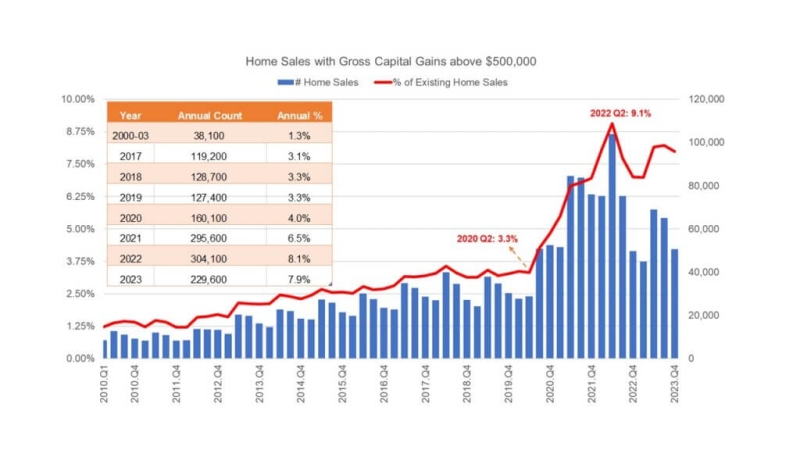
According to the latest Mortgage Monitor Report from Black Knight Inc., dwindling levels of inventory are pushing the prices of homes to unseen levels.
- Home prices grew at 14.8% on an annual basis in April, making it the highest annual home price growth rate Black Knight has ever seen.
- The number of foreclosure starts is down almost 26% year-over-year but increased slightly (2.7%) from April.
- Early-stage delinquencies (30-60 days delinquent) rose by 110,200 in May, but serious delinquencies (90+ days delinquent) declined for the ninth consecutive month.
- If home values continue to rise at their current rate and 30-year rates rise to 4.5% by the end of next year, the payment-to-income ratio would rise to 22.5% by the end of this year. It would climb above 28% by the end of 2022.
According to the latest Mortgage Monitor Report from Black Knight Inc., dwindling levels of inventory are pushing the prices of homes to unseen levels. Using a database that represents the majority of the national mortgage market, the report looks at how recent and aggressive home price gains are impacting housing affordability.
“Home prices grew at 14.8% on an annual basis in April,” said Black Knight data & analytics president, Ben Graboske. “That’s the highest annual home price growth rate we’ve ever seen – and Black Knight’s been tracking the metric for almost 30 years now. Single-family homes saw the greatest gains, with prices up 15.6% from last April, also an all-time high, while condo prices are up 10%. Driving this growth are two key elements: historically low-interest rates and – more acutely – the lack of available-for-sale inventory.”
Shrinking levels of inventory are partially due to the government-imposed moratorium and forbearance plan. Under these protections, borrowers can refrain from selling their homes or getting evicted during the pandemic. Unfortunately, this puts a huge strain on the market. The number of foreclosure starts is down almost 26% year-over-year, but increased slightly (2.7%) from April. The number of foreclosure sales is down 12% from last month, but grew 39% year-over-year. There are 148,000 total properties in foreclosure pre-sale inventory, which is down 5,000 from last month and down 52,000 from a year ago.
The national delinquency rate grew from 4.66% in April to 4.73% in May, jumping 1.51% in a month. Early-stage delinquencies (30-60 days delinquent) rose by 110,200 in May, but serious delinquencies (90+ days delinquent) declined for the ninth consecutive month.
Despite the improvement in more seriously delinquent loans, there are 1.26 million more delinquent loans than there were prior to the pandemic. The number of properties that are 30 or more days past due, but not in foreclosure, hit 2,511,000 this May.
The top five states with the highest percentage of foreclosures and delinquencies compared to active loans (non-current percentages) are Mississippi (8.56%), Louisiana (8.07%), Hawaii (7.08%), Oklahoma (6.76%), and Maryland (6.64%).
“It’s not getting any better, either,” Graboske continued. “Data from our Collateral Analytics group showed there was two months’ worth of single-family inventory nationwide in March, the lowest share on record and trending downward. In fact, there were 26% fewer newly listed properties in April as compared to pre-pandemic seasonal levels.”
The report also presents scenarios of how affordability would be affected if home prices continue to rise at the current rate in different mortgage environments. If the 30-year rates were to slowly rise to 3.5% by the end of 2022, the national payment-to-income ratio would hit 21.6% by the end of this year and 25% by 2022. This means that even if mortgage rates remain low during the next 18 months, the current rate of price growth is not sustainable.
If home values continue to rise at their current rate and 30-year rates rise to 4.5% by the end of next year, the payment-to-income ratio would rise to 22.5% by the end of this year. It would climb above 28% by the end of 2022.
“Entering June, the share of the median income needed to make the monthly payments on the median-priced home had risen to 20.5%. In recent years, 20.5% has roughly been the tipping point at which appreciation begins to decelerate, but given the severity of inventory shortages, home prices have – at least for now – continued to sharply accelerate even in the face of tightening affordability,” Graboske added.
To read the full Mortgage Monitor Report, click the link or visit https://www.blackknightinc.com/.




